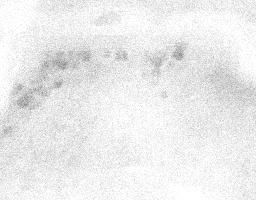A new research paper that uses Pixcavator:
Electron mirroring: control of electron transport and understanding of physical processes from SEM images [1] by Marziale Milani, Davide Bigoni, Claudio Savoia (in Proceedings of ITP2009 Interdisciplinary Transport Phenomena VI: Fluid, Thermal, Biological, Materials and Space Sciences October 4-9, 2009, Volterra, Italy.)
From the paper:
“Mirror effects occur when a primary electron beam scans an insulating sample and the charges on its surface accumulate to a high density. When the energy of the electrical field becomes higher than the primary beam one it prevents the charged particles from reaching the sample surface, reflecting them somewhere else in the vacuum chamber whose walls act as a mirror. The inner part of the specimen chamber can be therefore imaged.”
“Video signals were then analyzed as a function of detector bias voltage, i.e. variations in the mirror images due to variations of these parameters have been compared by acquiring (by “Pixcavator” software) the grey levels in selected portion of images and the geometrical shapes of some easily recognizable element in the mirror images.”
Mirror images of polyester samples:
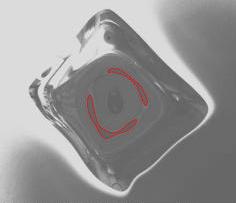

For more papers follow this link.
Comments Off
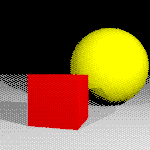

Taking two images of the same scene from two slightly different locations and then matching the items in them pairwise gives you the distances to these items.
The image matching part is crucial and less trivial. For example on the right the corner of the cube may be a good pixel to choose. The rest of image is mainly featureless. The geometry is trivial, below.
Suppose we established a match between a pixel P in image I and pixel Q in image J. Let’s find the distance to what the pixels depict.
Two images with a red pixel in each image representing the same thing:
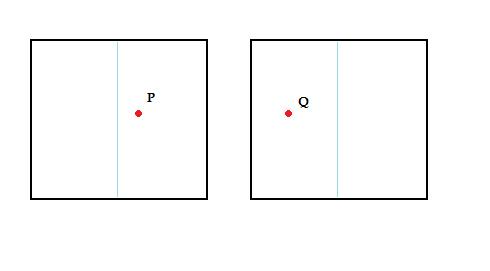
We need only to consider only the horizontal line through P,Q to find the distance to the object with the red dot. View from above; the eyes are the foci of the cameras. Black lines are the images:
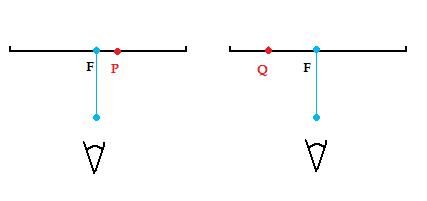
“Triangulation”: the object lies on the line from the focus of the camera and its mark on the image. Here the big red dot is the actual location of the object:
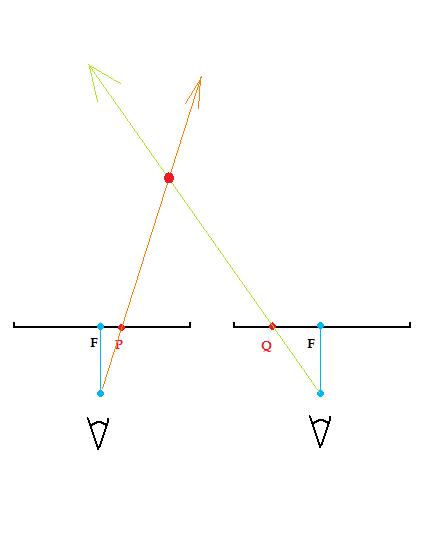
The geometry:
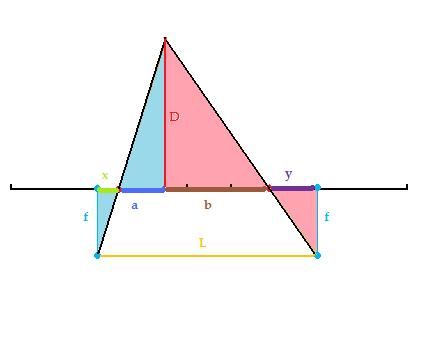
D is what we are looking for.
The pink, and the blue, triangles are similar. So, after a bit of algebra we have:
D = f(L/d-1),
where d=x+y is simply the distance the pixel moves as we switch from one image to the other, called the disparity.
More details in the article.
Comments Off
The site is being restructured right now. The goal is to integrate the Computer Vision wiki (mostly content) with the rest of the site (mostly product information). Virtually all of this content has already moved to the wiki. The only exception will be this blog. The menu at the top of this page will be removed and the pages it links to will be disabled, eventually.
This is the new welcome page of the site.
Please update your bookmarks, links, etc.
Comments Off
I updated several articles in the wiki in order to incorporate the new writing and images from my last talk.
I updated both Binary images and Gray scale images, as well as their follow-ups: algorithms, pseudocode, and implementation. Also: Topology graph, Graph representation of gray scale images, Tree representation of images, Filtering output data, and some others.
The total is now 193 pages with 584 uploaded files, i.e., illustrations.
Comments Off
TechCrunch deadpools Riya. Certainly, no surprise to me. Their technology was never been impressive (posts are here). Like.com remains but does not seem to be going anywhere…
At least TechCrunch announced this death after promoting Riya for 3 years. Others have died or will die more quietly.
Comments Off
A paper that uses
Pixcavator has been published:
CELL METAL SEGREGATION AND ULTRAMICROSCOPY TECHNIQUES: TOWARDS MAMMALIAN LIVER PATHOLOGIES CHARACTERIZATION [1] by Marziale Milani, Claudio Savoia, Claudia Brundu, Francesco Tatti, Grazia Santisi.
From the paper:
“Iron, Copper and Zinc are essential metals in physiological cell metabolism… Our work based on ultramicroscopy techniques focuses on some aspects of metal transport in terms
of segregation, storage and distribution among the different cell compartments. An important goal is the understanding of granule building and disruption.”
“To analyze data obtained from map analysis the Pixcavator software 1.2.1 (Intelligent Perception) has been employed.”
Spatial distribution of Cu, Zn, P and S spots in two S-cells. The graph was performed using the coordinates x, y obtained via Pixcavator.
Comments Off










